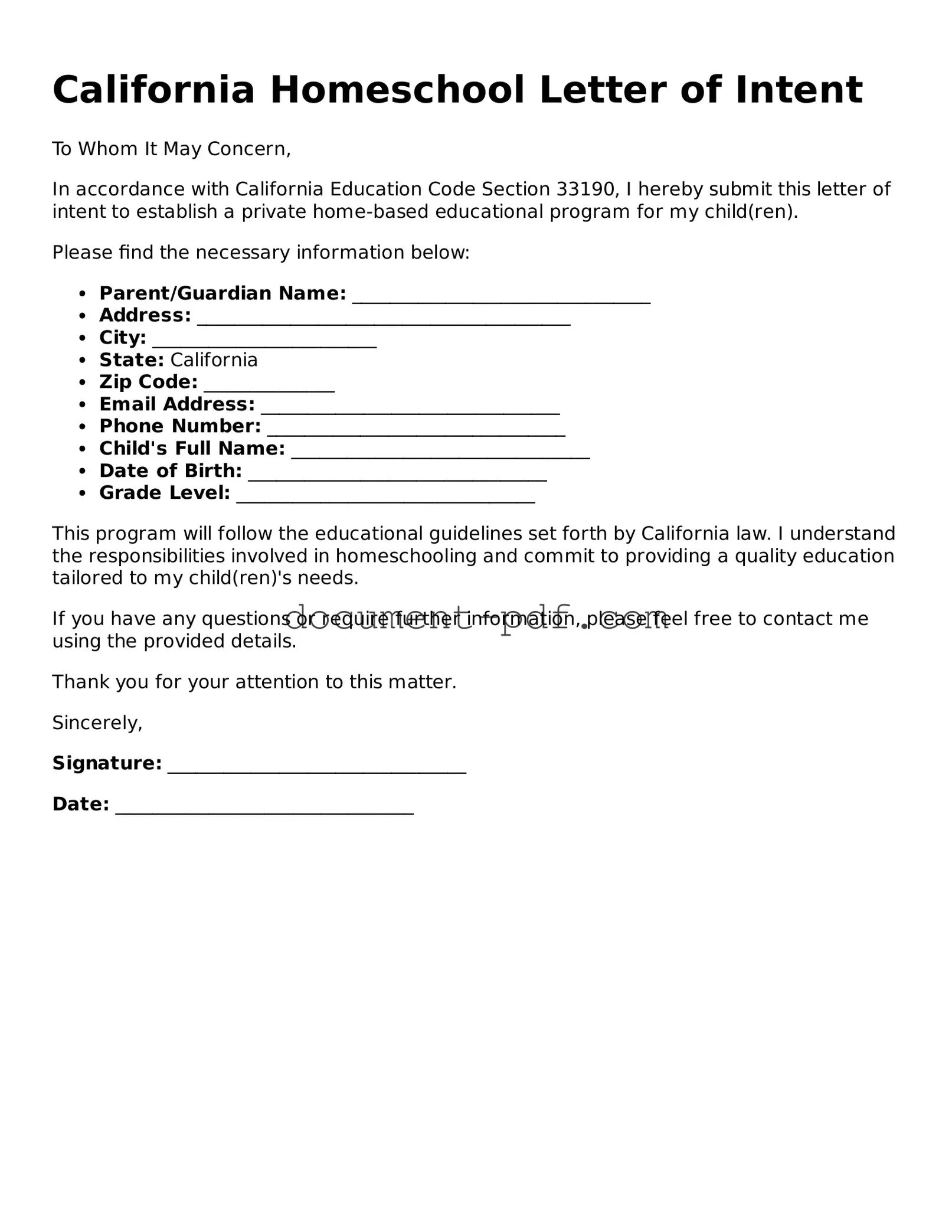California Homeschool Letter of Intent
To Whom It May Concern,
In accordance with California Education Code Section 33190, I hereby submit this letter of intent to establish a private home-based educational program for my child(ren).
Please find the necessary information below:
- Parent/Guardian Name: ________________________________
- Address: ________________________________________
- City: ________________________
- State: California
- Zip Code: ______________
- Email Address: ________________________________
- Phone Number: ________________________________
- Child's Full Name: ________________________________
- Date of Birth: ________________________________
- Grade Level: ________________________________
This program will follow the educational guidelines set forth by California law. I understand the responsibilities involved in homeschooling and commit to providing a quality education tailored to my child(ren)'s needs.
If you have any questions or require further information, please feel free to contact me using the provided details.
Thank you for your attention to this matter.
Sincerely,
Signature: ________________________________
Date: ________________________________
